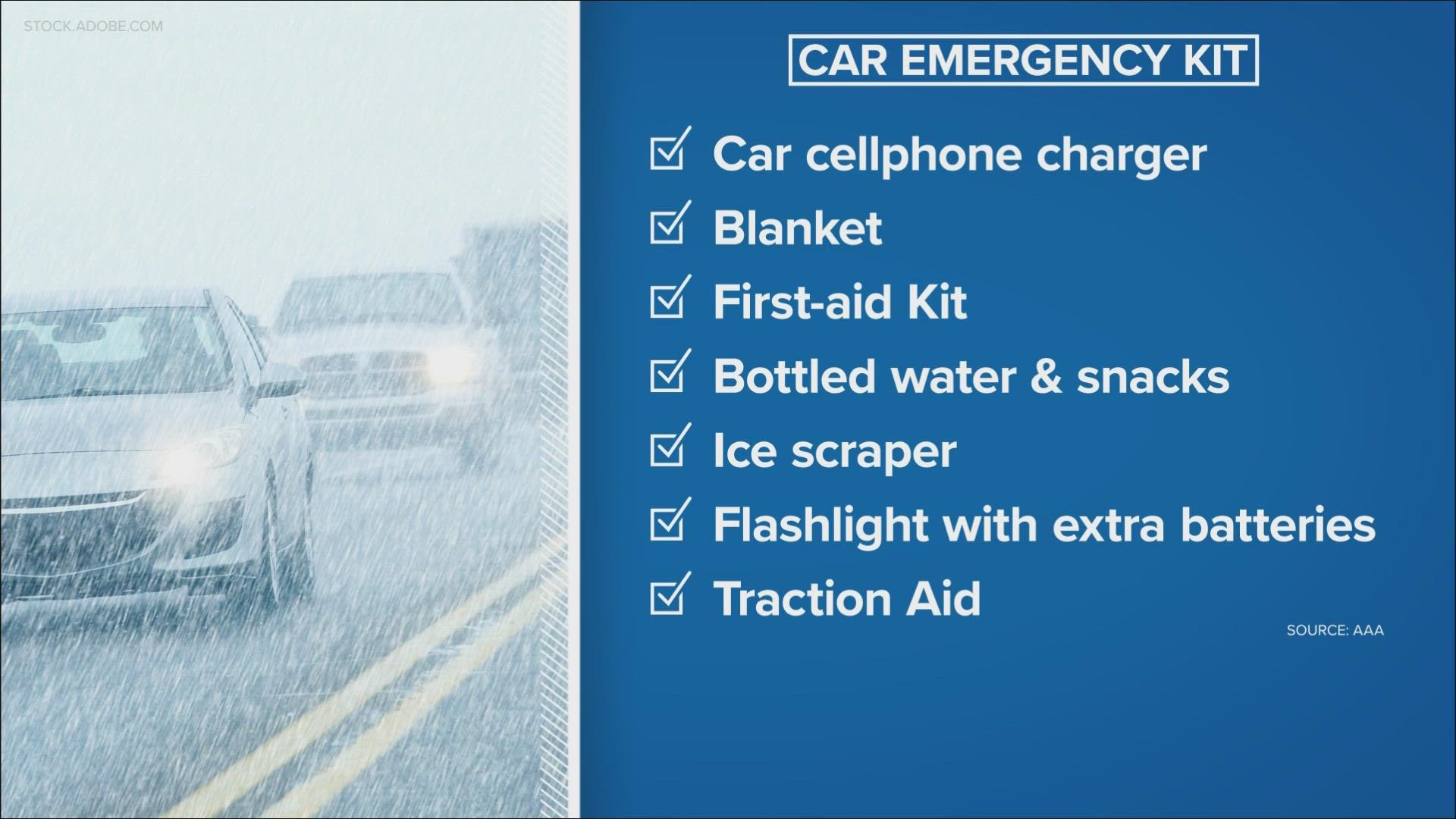DALLAS — North Texas will get its first round of winter weather this week, including ice, sleet and possibly snow, along with freezing temperatures.
And that means we'll be presented with our first challenge on the roadways.
The Texas Department of Transportation had its crews working ahead, as they started pre-treating the roads on Monday afternoon with brine, a mixture of salt and ice.
The brine can wash away in more than two inches of rain, but the salt should help prevent ice from initially bonding on the roadways, officials said.
But brine and other de-icing methods can also present a problem for vehicles, after the fact. That's why AAA Texas is reminding drivers to wash their vehicles in the winter, especially after they drive on roads that have been treated with de-icing chemicals.
The de-icing chemicals, over time, can cause rust damage to brake lines, fuel tanks, and exhaust systems, according to AAA.
“Washing your vehicle in the winter, especially after roadways are treated for ice and snow, is critical to avoiding costly repairs down the road,” AAA Texas spokesperson Daniel Armbruster said.
Here's what AAA Texas recommends:
- When possible, limit driving immediately before, during and after winter storms when salt and de-icing solutions are being applied and are at their highest concentrations.
- Frequently wash your vehicle, paying particular attention to the undercarriage. This will loosen, dissolve and neutralize de-icing solutions. Many drive-through car washes offer an undercarriage rinse as an option.
- Always use a high-quality car wash solution, not a household dish detergent that will strip the wax from your vehicle.
- Repair any possible body damage and touch up paint scratches and chips that expose bare metal which could lead to rust.
- Give the entire vehicle and undercarriage one last cleaning in the spring. Any deposits left over from winter can continue to cause corrosion year-round if not properly removed.
Rust prevention is just one vehicle-related tip to keep in mind this week. Here's an explainer on the best ways to drive on ice and snow (if you have to), and the 17 things you should keep in your car's emergency kit.

